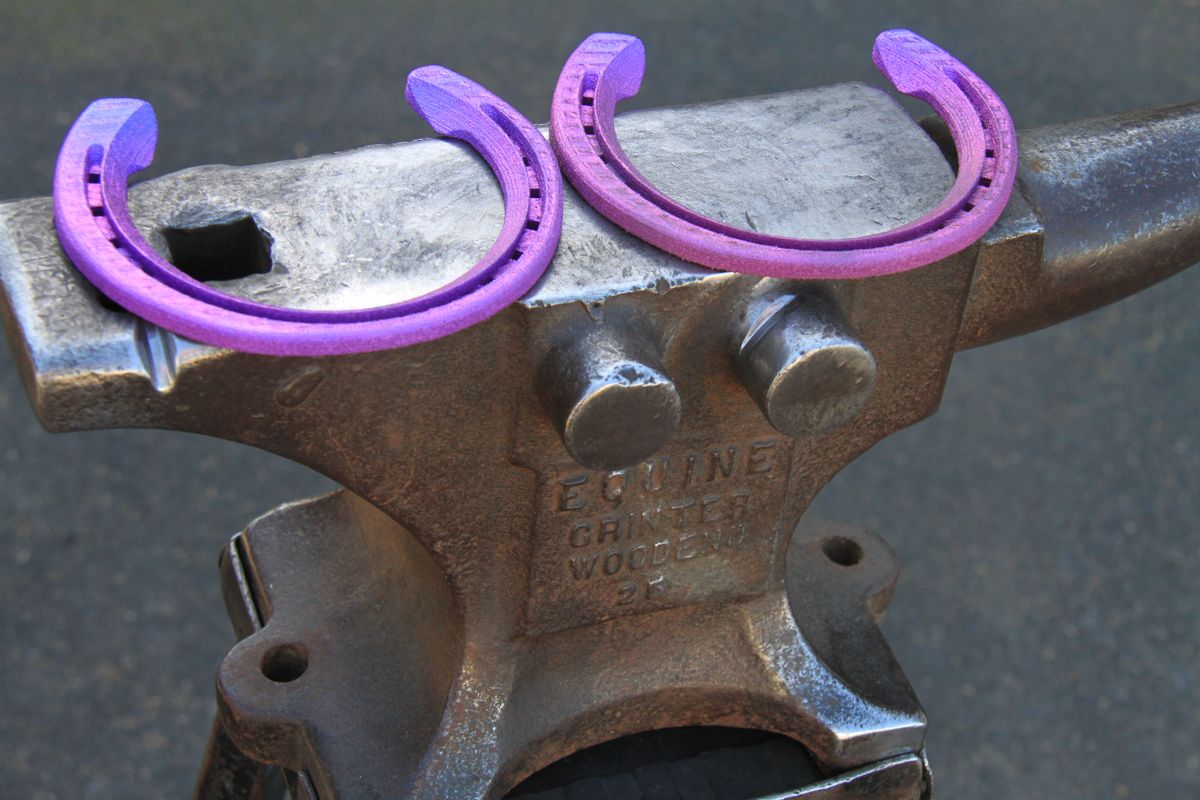Pretty in Pink: 3D-Printing 'Jimmy Choos' for Horses

Gone are the days when a sinewy blacksmith would hammer out a set of horseshoes over a hot anvil. One Australian racehorse is now sporting high-tech horseshoes that some are calling "the Jimmy Choos of horseshoes," referring to the luxury shoe designer.
Designed by researchers at the Commonwealth Scientific and Industrial Research Organization (CSIRO), the Australian science agency, the hot-pink horseshoes are custom-made for each of a horse's four hooves, using lightweight titanium and 3D-printing technology.
Each new shoe weighs about 3.5 ounces (100 grams) less than a regular aluminum horseshoe — and every ounce counts in the high-stakes world of horse racing. "Any extra weight in the horseshoe will slow the horse down," trainer John Moloney said in a statement. "These titanium shoes could take up to half of the weight off a traditional aluminum shoe, which means a horse could travel at new speeds." [The 10 Weirdest Things Created By 3D Printing]
CSIRO researchers used a handheld scanner to create a 3D model of each hoof. Using industrial-design software linked to a titanium printer, four custom-shaped horseshoes were printed in a matter of minutes.
"Advances in 3D scanning provide an easy, affordable way to get a customized object and still have ultimate design flexibility," said John Barnes of CSIRO, as quoted by CNN. "Four of the customized kicks [horseshoes] were printed within only a few hours!"
Sometimes referred to as additive manufacturing, 3D printing has been touted as a revolutionary advance in computer technology that could completely change the nature of production in the 21st century.
Medical-device manufacturers are hoping to make customized human organs like hearts within a decade, reducing the need for organ transplants. Rocks created on 3D printers could change the way petroleum geologists look for oil, and 3D-printed fossils could spark new ways of teaching evolutionary biology.
Sign up for the Live Science daily newsletter now
Get the world’s most fascinating discoveries delivered straight to your inbox.
Chefs, too, are getting in on the act, finding new ways to "print" food such as personalized chocolate, cheese, cookies — even tiny spaceships made of deep-fried scallops. In Japan, for example, you can now order a 3D-printed version of your face made entirely of chocolate.
3D printing with metals like titanium opens up whole new worlds of invention. "There are so many ways we can use 3D titanium printing," said Barnes. "At CSIRO, we are helping companies create new applications, like biomedical implants and even things like automotive and aerospace parts.
"The possibilities really are endless with this technology," Barnes said.
Follow Marc Lallanilla on Twitter and Google+. Follow us @livescience, Facebook & Google+. Original article on LiveScience.

Most Popular




